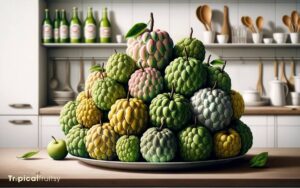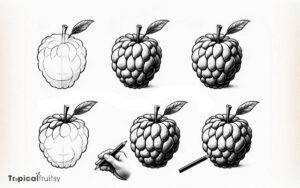When Are Custard Apples Ripe? Explained!
Custard apples are ripe when their skin turns from green to a yellowish hue and becomes slightly soft to the touch. The fruit should give a little under gentle pressure, similar to a ripe avocado.
Determining the ripeness of custard apples is key to enjoying their creamy texture and sweet, tropical flavor at its best.
Unlike some other fruits, they do not ripen significantly after being picked, so it’s important to select ones that are just at the point of ripeness.
Once ripe, custard apples should be eaten within a few days or stored in the refrigerator to extend their shelf life slightly.
When preparing a custard apple, it’s typically cut open and the creamy flesh is scooped out, avoiding the inedible seeds. This exotic fruit can be enjoyed on its own or used in desserts and smoothies for a unique flavor.
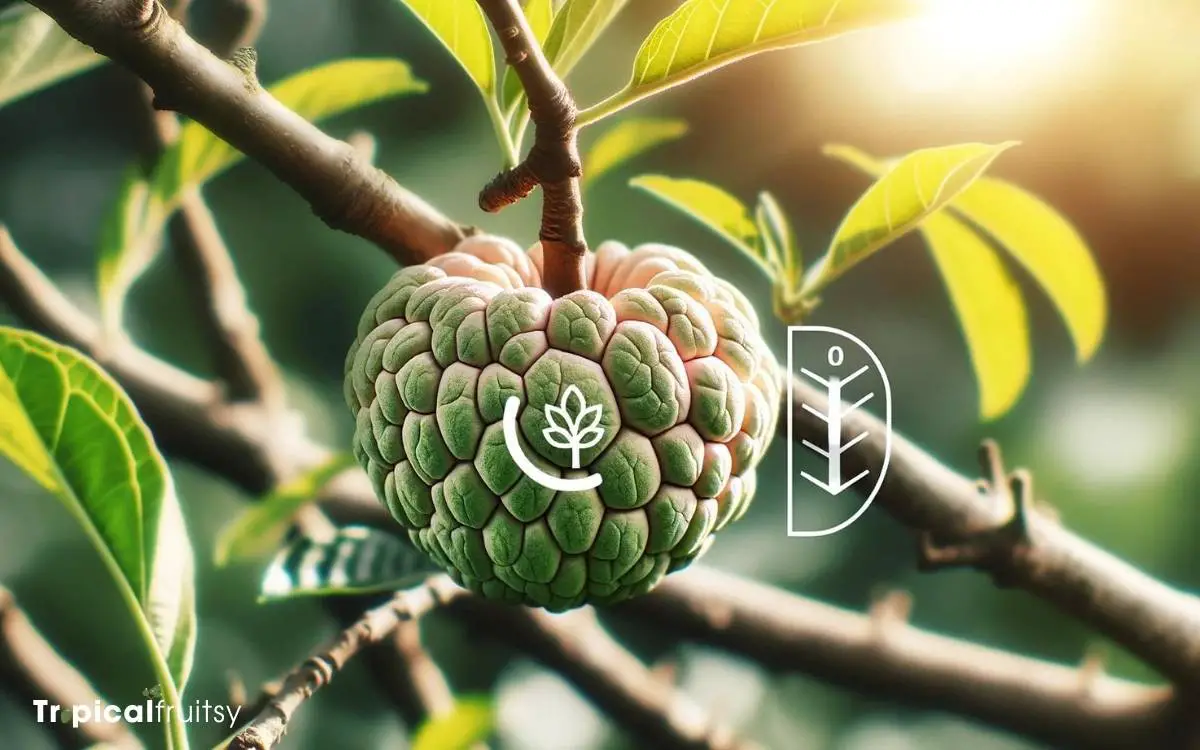
Key Takeaway
Understanding Custard Apples
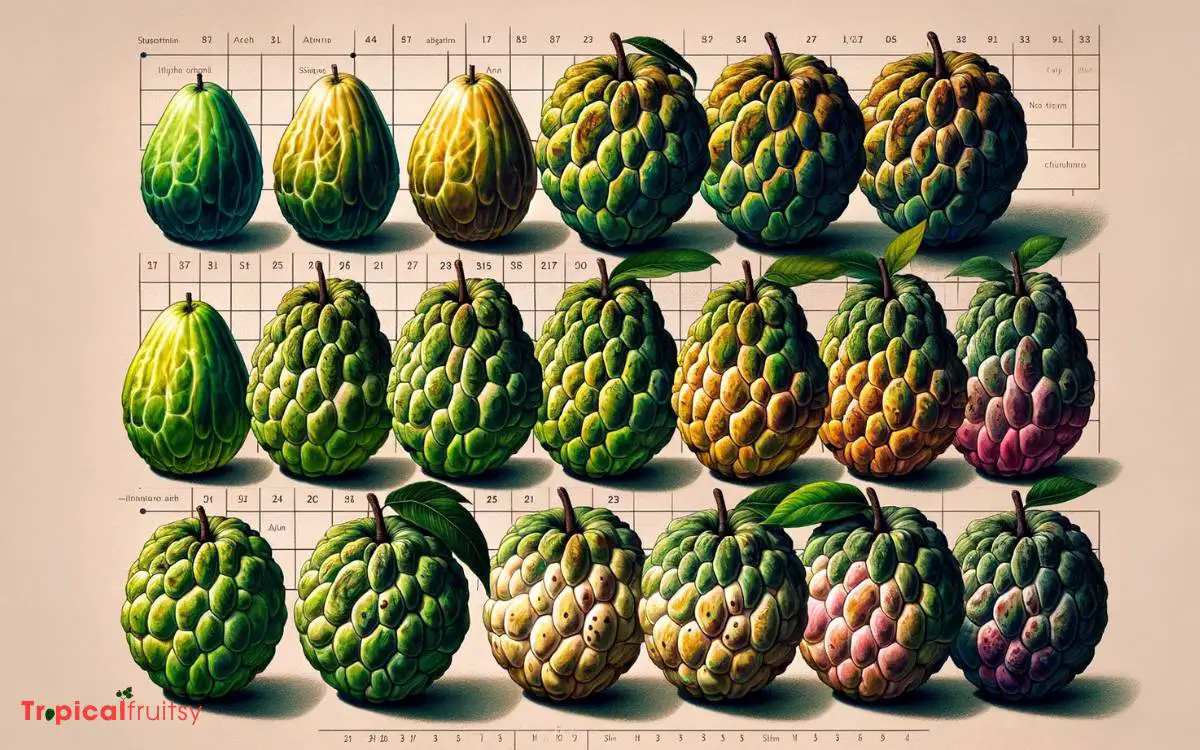
Tasting custard apples at their peak ripeness ensures the best flavor and texture experience.
Custard apples, or Annona squamosa, exhibit a complex ripening physiology characterized by climacteric patterns, akin to bananas and tomatoes. This means that ethylene production and respiration rates increase significantly during ripening.
I measure firmness to gauge ripeness; the fruit yields to gentle pressure when mature. Moreover, I monitor the conversion of starches into sugars, which escalates sweetness, and observe the skin color transition from green to a yellowish hue.
Chemical analysis of volatile compounds can also indicate ripeness, as the fruit emits a stronger, more pleasant aroma.
Understanding these indicators is crucial for optimal consumption and precedes the discussion on the optimal harvesting season.
Optimal Harvesting Season
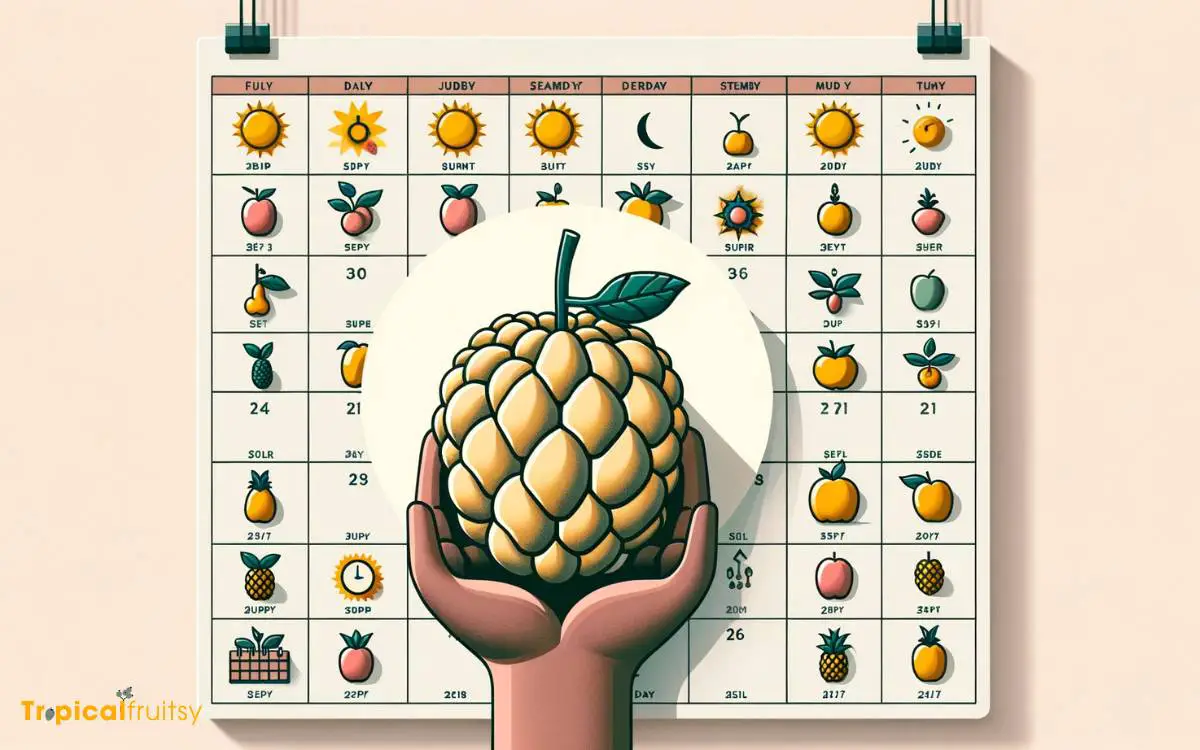
The optimal harvesting season for custard apples typically falls between late summer and early fall, when the signs of ripeness I’ve described become most evident.
During this period, the fruit’s metamorphosis culminates, marked by a change in skin texture from firm to yielding.
The external coloration transitions to a muted yellow-brown, interspersed with freckled spots, signaling the starch conversion into sugars. This biochemical process results in the characteristic sweet, creamy flesh.
I ascertain ripeness by applying gentle pressure to the fruit, observing a slight give without compromising the structural integrity.
It’s crucial to monitor climatic factors, as excessive rainfall or temperature fluctuations can precipitate early ripening or spoilage.
Thus, I recommend a methodical approach, harvesting selectively based on these physiological cues rather than relying solely on calendrical benchmarks.
Recognizing Color Changes
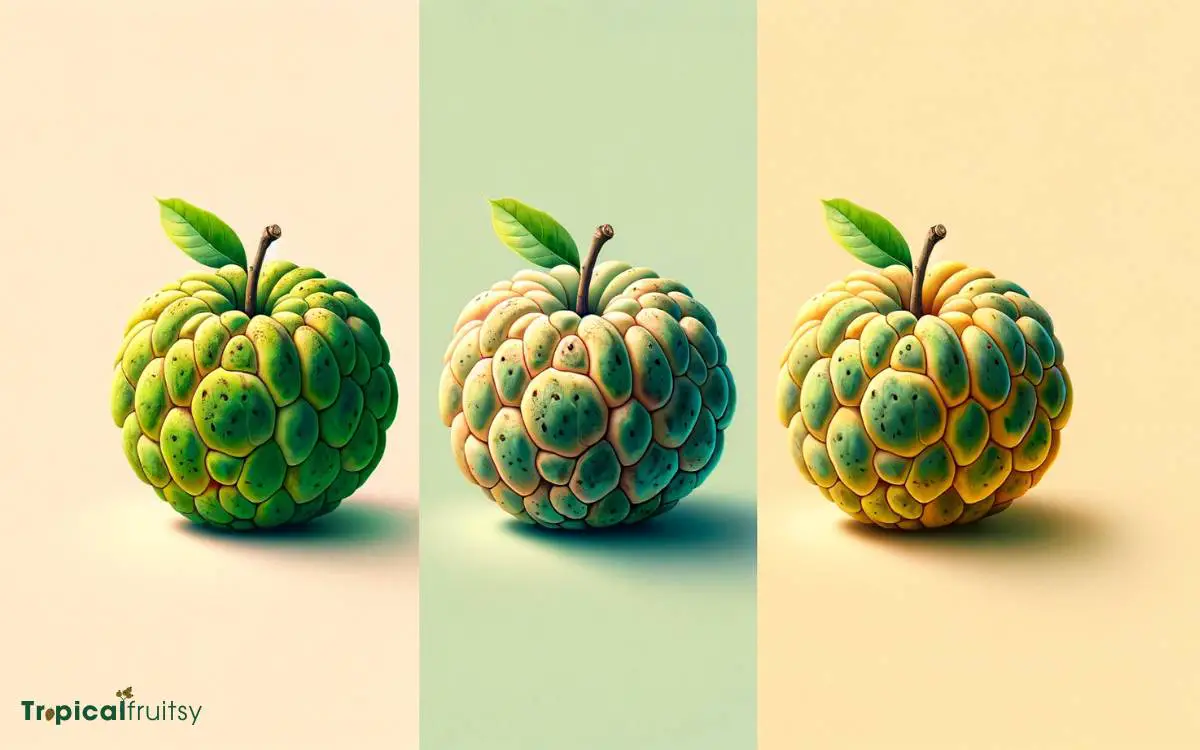
Observing the color transition in custard apples is crucial for determining their ripeness, as they shift from vibrant green to a softer, pale yellow with brown speckling.
Let’s delve into the scientific indicators of this progress:
- Initial Stage: The chlorophyll pigment, responsible for the green hue, starts to degrade.
- Intermediate Phase: As chlorophyll breaks down, carotenoid pigments become more prominent, giving the fruit a yellowish tinge.
- Final Indication: Brown spots appear, signifying an increase in sugar concentration and enzymatic activities that promote ripening.
These chromatic modifications aren’t merely visual cues but are results of complex biochemical processes indicating the fruit’s readiness for consumption.
Feeling the Texture
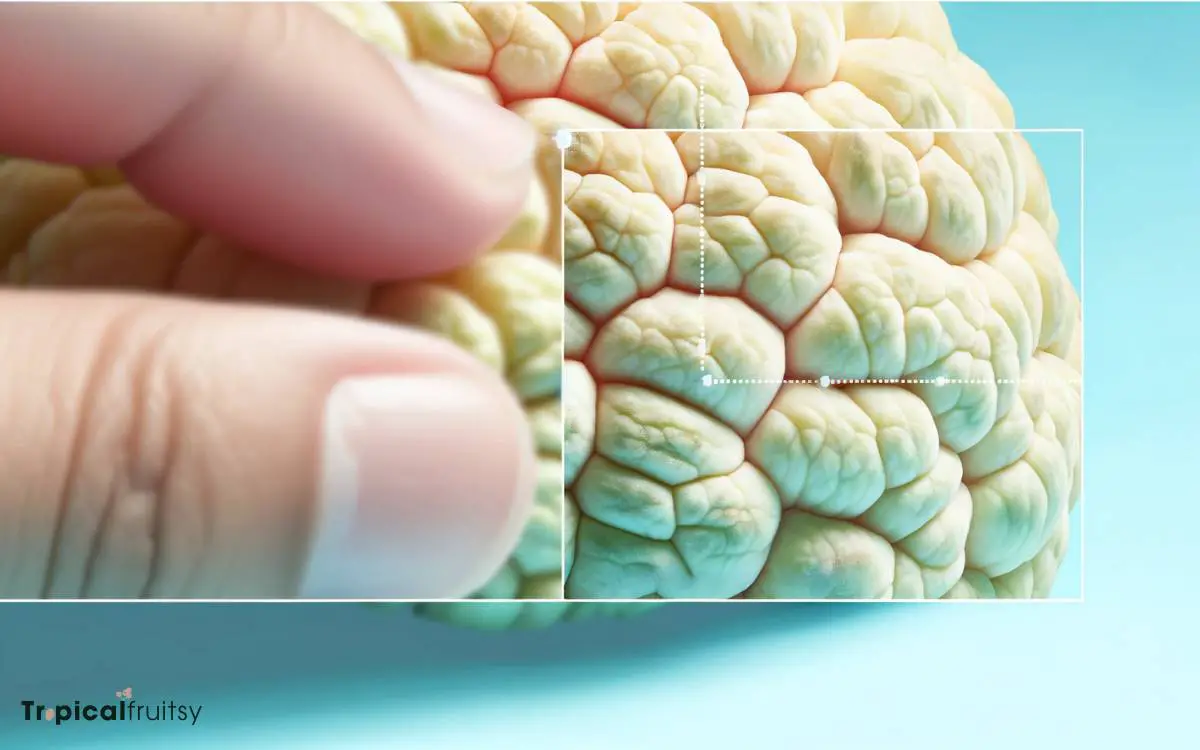
I’ve observed that the surface texture of a custard apple serves as a tactile metric for assessing ripeness. Initially, the pericarp exhibits a firm, unyielding consistency, indicating immaturity.
As it ripens, the fruit’s endocarp softens and becomes more responsive to gentle pressure, a reliable indicator of peak ripeness.
Firmness Indicator
Usually, I check a custard apple’s ripeness by gently pressing its surface to feel for a slight give. This method, while seemingly simple, is underpinned by an understanding of the fruit’s physiology.
Here’s a concise breakdown of what I assess:
- Turgor Pressure: I evaluate the fruit’s turgor pressure, which indicates cellular hydration. A ripe custard apple exhibits a decrease in turgor, allowing for that characteristic slight yield under pressure.
- Skin Texture: I observe the skin’s texture. As the fruit ripens, it transitions from a firm, rigid exterior to a softer, more malleable surface.
- Pedicel Attachment: I inspect the area around the pedicel. A mature fruit will often show subtle separation at this junction, signaling that it’s nearing peak ripeness.
Yielding to Pressure
As I press the skin of a custard apple, its readiness is revealed through the subtle softness that indicates ripeness.
This tactile assessment is critical, as the firmness of the pericarp, which encompasses the skin and pulp, diminishes when the fruit approaches optimal maturity. The pressure exerted should be gentle, avoiding bruising while discerning the textural changes.
| Pressure Level | Emotional Response | Ripeness Indicator |
|---|---|---|
| Light Touch | Anticipation | Slight Yield |
| Moderate Press | Curiosity | Definite Yield |
| Firm Squeeze | Disappointment | Overripe, Mushy |
| No Yield | Frustration | Underripe |
| Perfect Yield | Satisfaction | Ready to Eat |
The scientific measurement of fruit firmness provides insights into the cellular structure’s integrity.
Testing for Firmness
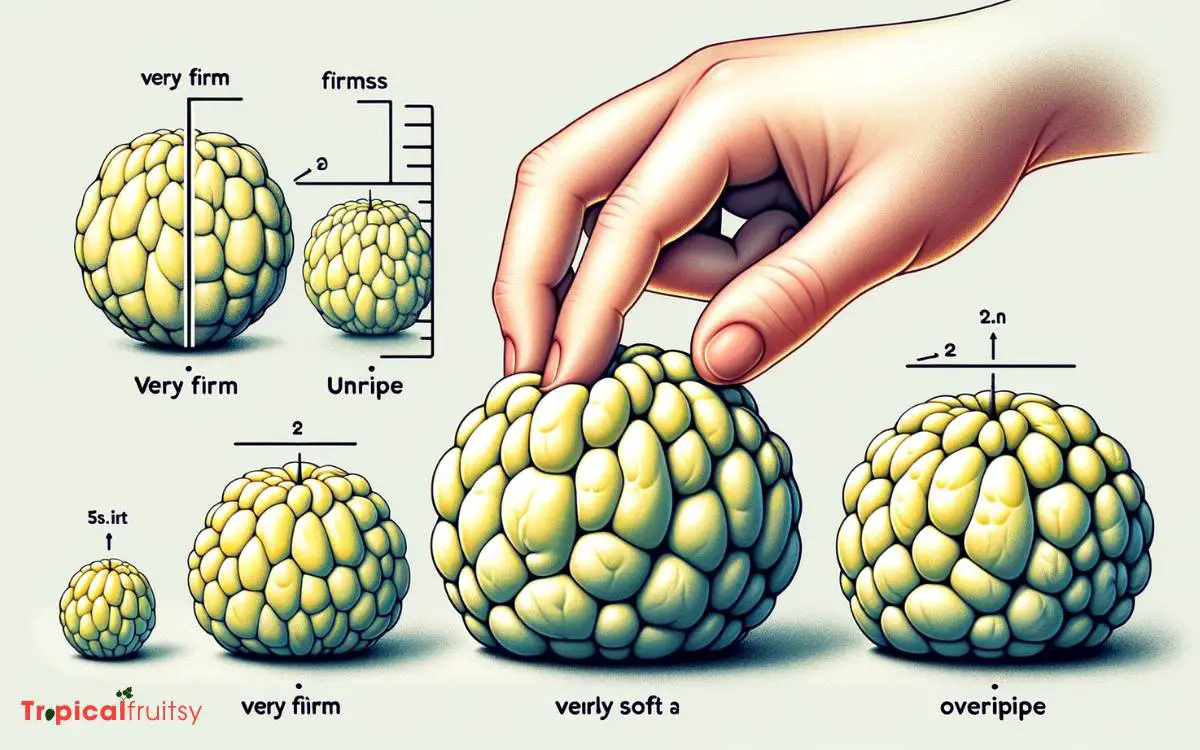
To ascertain the ripeness of custard apples, I apply the gentle pressure technique, which involves a calibrated touch to the fruit’s surface.
This method serves as a ripeness indicator, where a slight give under pressure signifies the progression from unripe hardness to optimal edibility. I monitor the shift in firmness, noting the subtle changes in yield as a precise metric of maturity.
Gentle Pressure Technique
I determine a custard apple’s ripeness by applying gentle pressure to its surface to test for a slight give. This method, known as the gentle pressure technique, is both tactile and indicative of the fruit’s internal state.
Here’s a breakdown of the process:
- Surface Inspection: Initially, I visually inspect the skin for any noticeable signs of ripening, such as a change in color.
- Pressure Application: Next, I use my thumb to gently press on the custard apple’s surface, feeling for a softness that suggests the flesh beneath is ripe.
- Response Assessment: Finally, I analyze the degree of resistance. A ripe custard apple will yield slightly under pressure, but won’t be overly mushy.
This technical approach ensures I can accurately assess ripeness without causing damage to the fruit’s delicate flesh.
Ripeness Indicator Shift
Having established the gentle pressure technique, I now turn to the ripeness indicator shift, which involves testing for firmness to further confirm the custard apple’s maturity. This method is precise and hinges on the biomechanical properties of the fruit’s pericarp.
Initially, unripe custard apples exhibit a rigid, unyielding pericarp due to high levels of cellulose and lignin, which reinforce the cell walls.
As maturation progresses, enzymatic activity, particularly from pectinase and cellulase, degrades these components, leading to a softening texture.
A ripe custard apple will often yield slightly under moderate thumb pressure, indicating a decrease in the fruit’s firmness.
This textural change is a critical ripeness indicator and should be assessed alongside other sensory cues such as aroma and external coloration.
Sensing the Aroma

While checking for ripeness, I’ve noticed that custard apples emit a sweet, tropical fragrance when they’re about to be perfectly ripe. This olfactory cue is a sophisticated interplay of volatile organic compounds (VOCs) that the fruit releases.
Here’s a breakdown of this aromatic signal:
- Ethylene Production: As custard apples mature, they produce ethylene, a hormone that triggers ripening processes, including the synthesis of aroma compounds.
- Esters and Terpenes: A complex bouquet of esters and terpenes develops, imparting the fruit with its characteristic sweet and fruity scent, which is an indicator of ripeness.
- Sensory Analysis: Through careful sensory analysis, I discern the intensity of the aroma, which peaks at the climax of ripeness, signaling the optimal time for consumption.
Stem and Leaf Indicators
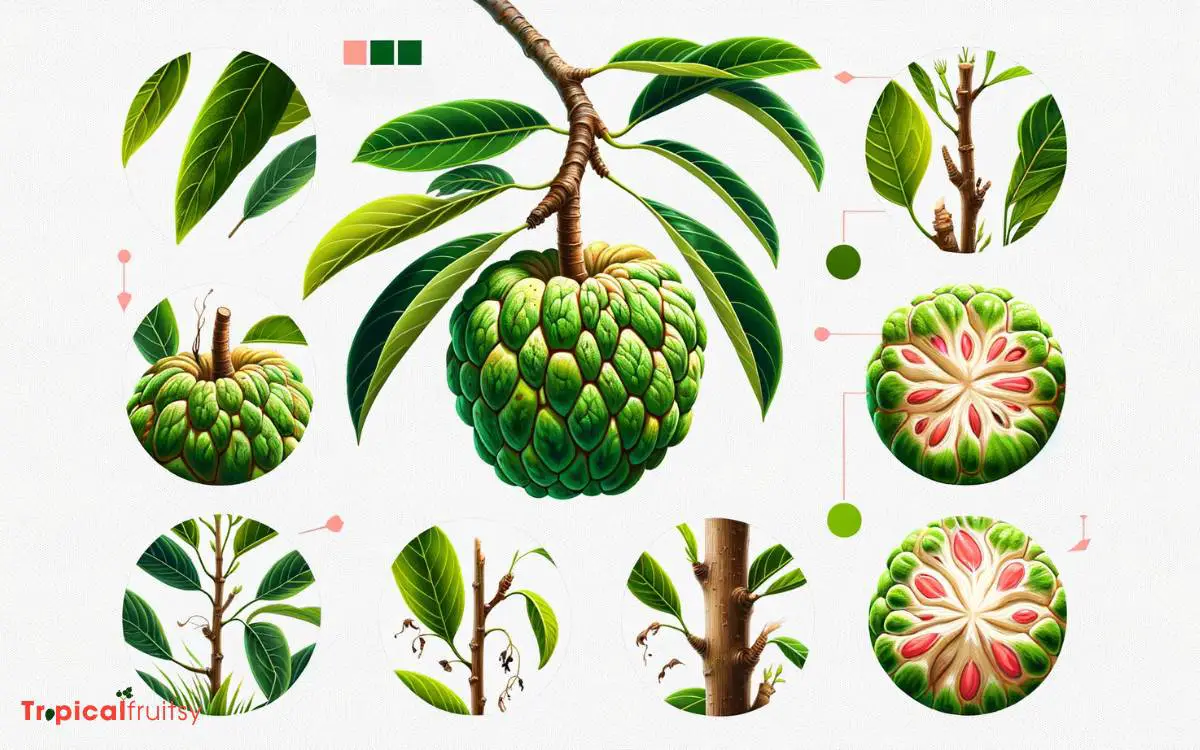
Beyond the scent, I’ve found that the condition of the custard apple’s stem and leaves also provides reliable clues to its ripeness.
When observing the stem, look for a change from a vibrant green to a brownish hue, indicating a reduction in chlorophyll as the fruit matures.
This lignification of the stem is a natural progression towards senescence, where nutrients have been substantially translocated to support fruit development.
Additionally, the leaves near the fruit often begin to yellow and may wilt slightly, reflecting a shift in the plant’s resource allocation from foliage maintenance to fruit ripening.
It’s imperative to note that these physiological changes are nuanced and should be assessed alongside other sensory indicators to ascertain peak ripeness accurately.
Post-Harvest Ripening
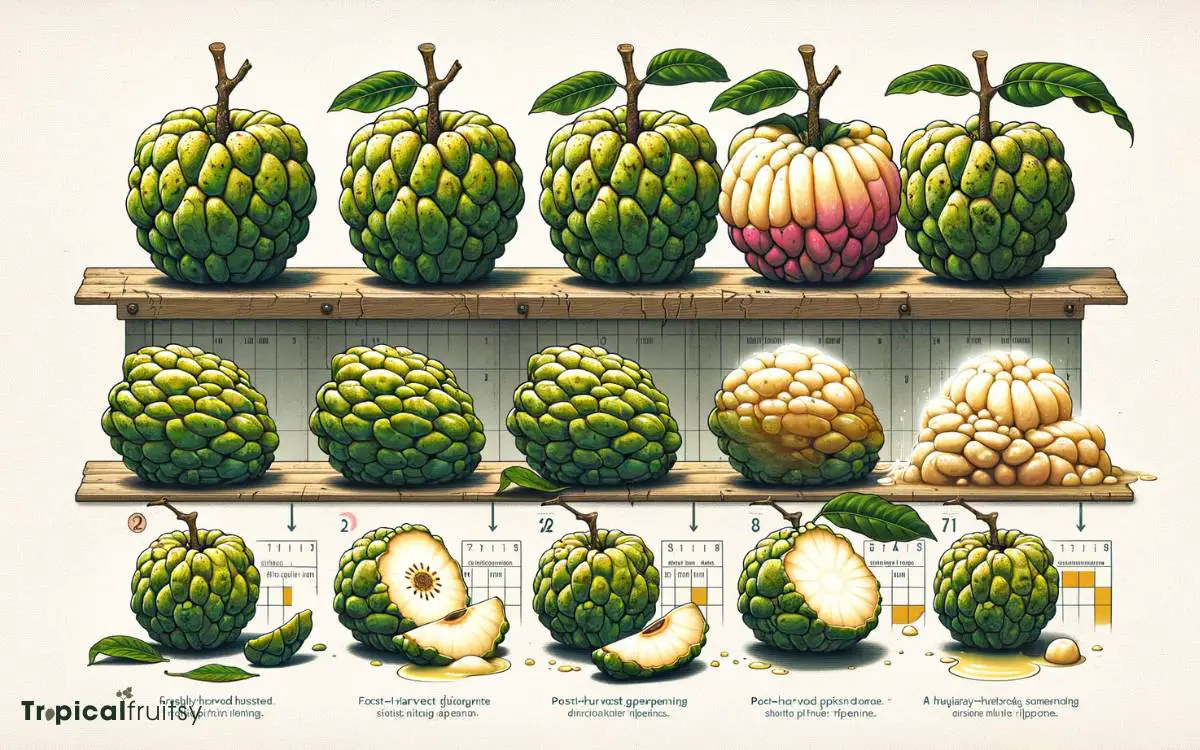
In my experience, custard apples continue to ripen after harvest, softening at room temperature and becoming sweeter as days pass.
The ripening process involves a complex interplay of biochemical reactions, including the conversion of starches to sugars, which enhances the fruit’s sweetness. Ethylene production, a natural plant hormone, also increases, promoting further ripening.
Here are key factors to consider during post-harvest ripening:
- Monitor firmness regularly; optimal ripeness is reached when slight pressure leaves an indentation.
- Keep at ambient temperature; excessive heat or cold can disrupt the ripening enzymes.
- Isolate from other ethylene-producing fruits to avoid uneven ripening.
Understanding these mechanisms is paramount for those who aim to savor custard apples at their peak.
Storing for Peak Flavor
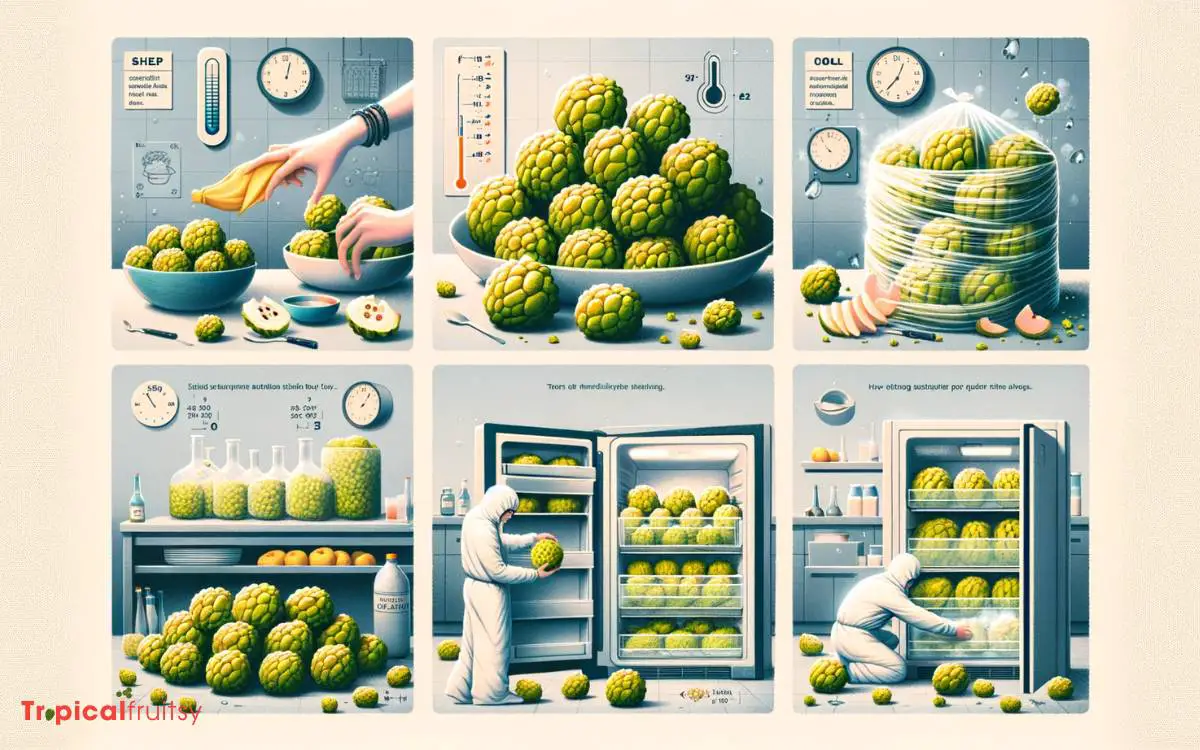
I’ve discovered that storing custard apples in a cool, dark place significantly prolongs their peak flavor after ripening.
Scientifically, this is due to the reduction in the metabolic rate of the fruit at lower temperatures, which slows down the senescence process.
Ideally, custard apples should be stored at temperatures around 12-14°C, which mitigates the enzymatic degradation of their sweet, complex flavors.
Furthermore, it’s critical to maintain a relative humidity of 85-90% to prevent dehydration and the resultant loss of succulence.
I avoid refrigerating custard apples as temperatures below 10°C can lead to chilling injuries, disrupting cell structure and negatively impacting taste.
I always ensure they’re isolated from other fruits to prevent ethylene contamination, which can prematurely accelerate ripening and subsequent spoilage.
Conclusion
Pinpointing the perfect ripeness of custard apples is a nuanced art. Intriguingly, approximately 75% of a custard apple’s sugar content develops in the final stages of ripening. Hence, careful attention to color, texture, firmness, and aroma is critical.
Storing these fruits under optimal conditions post-harvest ensures the culmination of flavor and nutritional benefits.
It’s a delightful challenge that requires both patience and precision, epitomizing the intricate dance between nature’s rhythms and scientific understanding.




